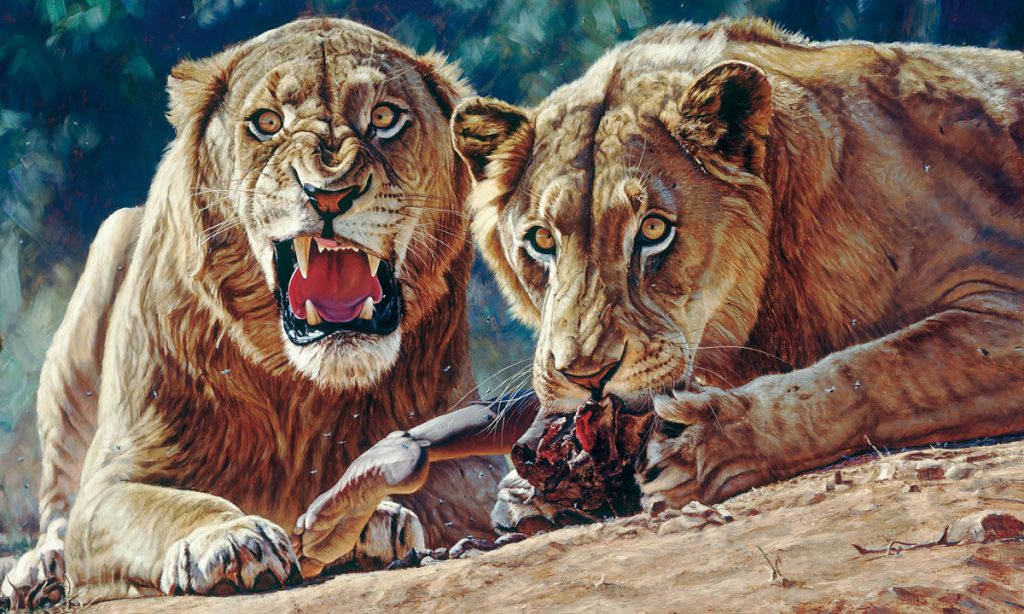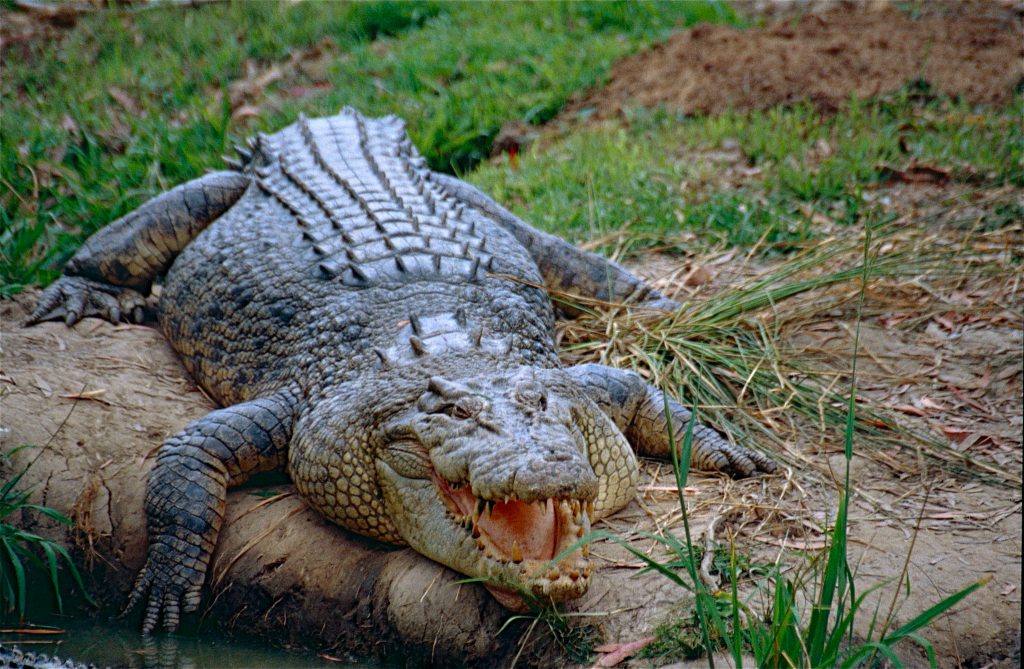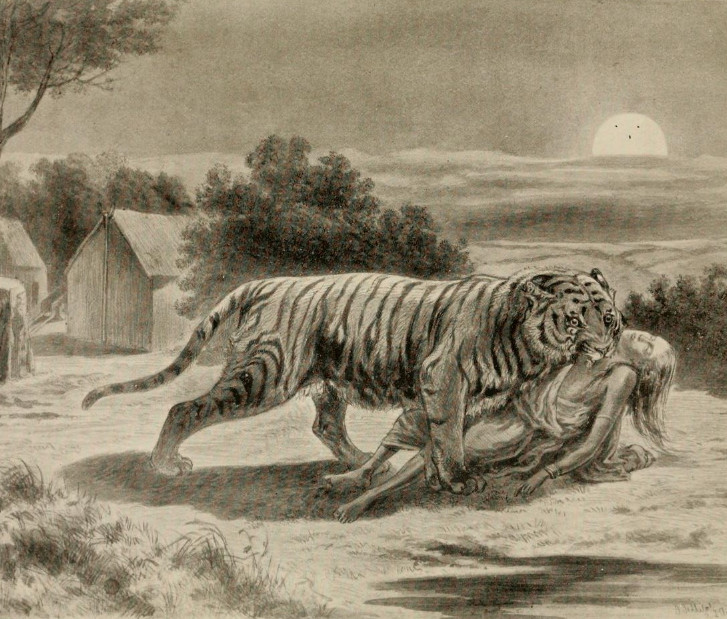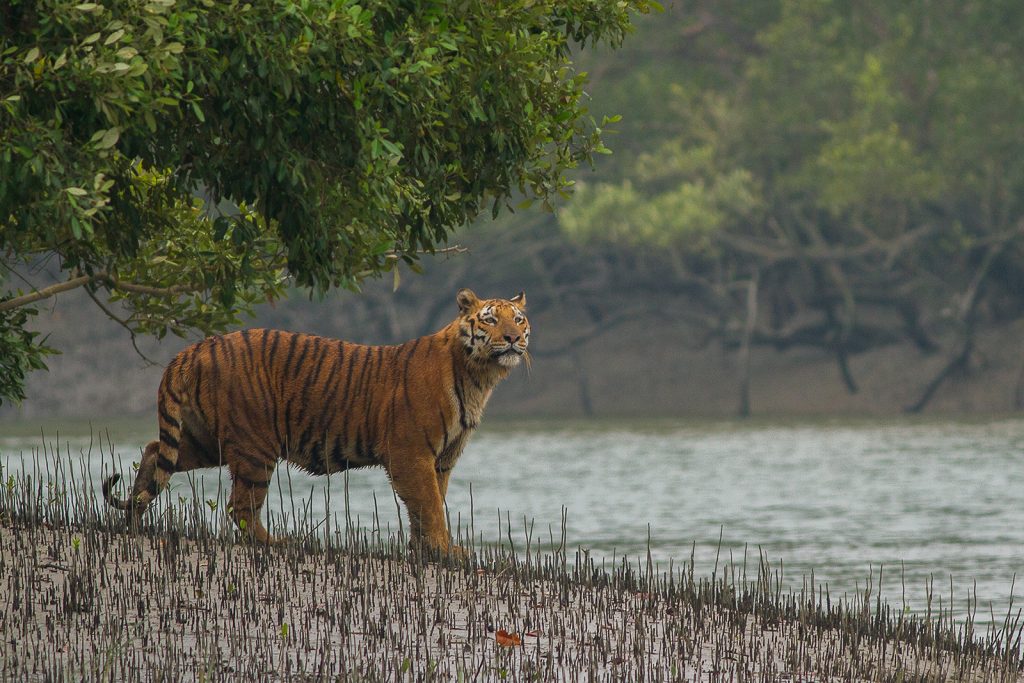
Thanks to tens of thousands of years of increasingly complex tools and technology at our disposal, humans have become the most apex of apex predators on this planet, doing what our hominid ancestors could not: keep ourselves from becoming food.
Well, mostly.
As clever as we are, humans are still very much considered morsels by many predators, if given the chance. While most attacks on humans are fluke one-offs, every so often, specific individuals make “man-eating” a habit, sometimes even preferentially targeting humans as prey.
To be clear, carnivorous animals hunting and eating humans has been recorded in a wide range of predatory species. But these are predominately singular events where a human is often killed and eaten in a case of mistaken identity, or perhaps in a moment of desperation from extreme hunger, or maybe even incidentally following retaliation in self-defense. “Man-eaters” are fundamentally different, in that they intentionally seek out humans as food, and do so repeatedly.
Overall, the phenomenon is incredibly uncommon. Humans aren’t what most predators on Earth have evolved to hunt, and we tend to be loud, off-putting, and bristling with unusual colors and instruments.

“We’re Going To Need a Bigger Boat” — Don’t Believe the Media Hype
Man-eating is also rarer in some species than you might think, particularly those with much-hyped reputations as deadly, people-gobbling monsters. Between films like “Jaws” or “Anaconda”, “Lake Placid”, and the oft-mocked “Grizzly”, the public consciousness is awash in images of killer sharks, snakes, crocodiles, wolves, and bears. However, the real-life counterpart animals are not nearly as bloodthirsty as these depictions suggest.
Not only are fatal shark attacks themselves extremely uncommon, habitual stalking of humans is not really a thing that sharks do at all. Instances of a single shark attacking and/or killing multiple people have only happened a few times, like in 1916 in New Jersey (which resulted in fatalities) or in Egypt back in 2010 (which did not). Large snakes like pythons, boas, and anacondas are definitely capable of eating humans (even adults) and occasionally do. But since snakes that are discovered to have eaten a person are also almost invariably killed, it’s difficult to say if serial killing is anything these reptiles can manage.
Polar bears sometimes will view humans as prey, but the vast majority of bear attacks—across all species—are not predatory in nature. There are a few accounts of bears going on rampages and killing humans, but only sometimes actually eating them. One example is The Sloth Bear of Mysore, which terrorized people near Bangalore, India in 1957. The bear ended up killing a dozen people and maiming twice that number, but only some of the victims were actually eaten.
Wolves—despite their harrowing portrayal in folklore and stories—don’t actually eat people as much as their reputation would suggest. Well, at least these days. Now that wolves have generally been pushed out of developed, human-populated areas over the last few centuries, encounters with wolves are already rare, let alone fatal attacks.
Man-eating wolves were far more common in places like Europe and Northern Asia hundreds of years ago when humans and wolves shared more habitat. Most predatory attempts were (and still are, when attacks occur) visited upon small children, sometimes even by sneaking into tents or camps at night, and snatching them away in their sleep. There are famed historical accounts of man-eating wolves that killed over a hundred people, like 1760s France’s Beast of Gévaudan, though it’s debatable whether it was a single wolf. Slightly more recently, there are stories like the “Wolves of Turku”, three wolves that killed and ate 22 children in Finland between 1880 and 1881.
With Crocs, It’s Complicated

Crocodiles, unlike sharks, actually do kill and eat many people annually. Nile, mugger, and saltwater crocodiles are responsible for hundreds of fatal attacks every year in Africa, South Asia, and Southeast Asia/Australia, respectively.
Much of this difference is likely attributable to humans’ and crocodiles’ reliance on a key resource: fresh water. These crocodile species are also ambush predators that specialize in taking down large mammalian prey, a category in which humans sit neatly. So, man-eating may be more of a natural part of some species of crocodiles’ behavior than with other predatory species.
Most attacks are singular, tragic events, but there are accounts of “man-eater” crocs that developed a particular habit of preying on people. The most notorious of these is Gustave, an old, massive Nile crocodile in the African nation of Burundi. Gustave is thought to have killed and eaten well over two hundred people since the late 1980s.
Big Cats: The Ultimate Man-Eaters
But none of the examples above—bears, wolves, or even crocodiles—can compare to the real kings of maneating behavior: big cats, particularly those in the Old World.
Cougars and jaguars are only rarely implicated in attacks on humans, and even more uncommonly in the form of predation. But the big three cats of Africa and Eurasia—leopards, lions, and tigers—have historically, and currently, been the source of the most extreme forms of man-eating behavior. While maneaters still represent a very small proportion of all of these species, man-eating cats have had far and away the biggest toll on human welfare.

Leopards have been preying on primates, including our ancestors, for millions of years. So, humans are a bit more likely to fall on the leopard’s menu than many other predators that produce maneaters. Leopards are also fairly comfortable with human development (more so than lions and tigers) and when taking up a taste for human meat, are more bold about how they hunt around human villages and encampments.
This boldness—particularly many years ago—allowed some man-eating leopards to kill numbers of people that on their face don’t seem possible. One such legendarily murderous animal was the “Leopard of the Central Provinces”, a male leopard that killed about 150 people over a few years in British India in the early 1900s.
Lions have their own share of maneaters too, and these animals tend to fit a profile—usually males, working alone or with a small number of other males. Like leopards, they can be assertive, picking off people from the outskirts of small towns and villages, and often at night.
One of the most famous accounts of man-eating lions is that of the “Tsavo Maneaters”, a pair of large, maneless male lions that killed and ate many workers building a railway connecting Uganda and the Indian Ocean in 1898. When the project started construction on a bridge over the Tsavo River in Kenya, workers were yanked out of their tents on a nightly basis and promptly consumed by the Tsavo lions. The attacks continued for much of the year, with all attempts to defend the camps with fire and fencing completely failing. Eventually, after dozens of deaths (no clear value is known), the two lions were shot, and their remains now are on display in the Field Museum of Natural History in Chicago.

But even lions can’t hold a candle to tigers, which have the highest death count of any big cat. Tigers may be responsible for some 373,000 deaths over the last two centuries, and some individuals were prolific maneaters. For example, the Tigers of Chowgarh—a female and her sub-adult cub—reportedly killed and ate over 60 people around the turn of the 20th century in northern India. Even more incredibly, the Champawat Tiger—a lone tigress in Nepal and northern India at the same period of time—is estimated to have killed more than 430 people. The Champawat situation was so extreme that life in the area ground to a halt for fear of the tiger, and the Nepalese army even got involved in an effort to flush the tiger out and kill it.
Why Man-Eaters Target People
But why do some animals become maneaters at all? There isn’t an overarching theory or explanation that covers everything from crocodiles to wolves to lions, as the cause is really dependent on the species and the circumstances of each maneater involved. That said, a few themes do pop up.
Perhaps the most common thread in many of the mammalian maneaters is some form of physical injury that would make hunting typical, more robust prey difficult or impossible. Post-mortem observations of the Champawat Tiger showed that she had shattered canine teeth, likely from a gunshot she survived. Dental and claw damage was present in the Chowgarh female as well. So too with the Tsavo lions and the Wolves of Turku. Humans are slow and have soft hides compared to more challenging (but more nutritious) prey like deer and zebras. An animal with damaged or abscessed teeth, or broken claws, might turn to humans as food to keep from starving.
Still, that doesn’t explain animals like the Leopard of the Central Provinces, which was apparently quite healthy. There are also examples of tiger populations—particularly in the swampy Sundarbans region of the Bay of Bengal—that have relatively high rates of maneaters without any indication of poor health. The same goes for African lions, which don’t always present maladies alongside their fondness of human prey. Plus, dental injury doesn’t really apply to crocodiles in the same way it does for big cats, since they replace their teeth throughout their life.

Some other explanations may be a lack of normal prey; through overhunting and agriculture, humans are effective displacers of native animals that lions and tigers feed upon. In areas where people have pushed out large, herbivorous prey species, these big cats may have to turn to less favored, bipedal options. There is also the possibility that in times of armed conflict, the glut of exposed or barely buried human bodies facilitates scavenging by large predators, priming them for seeing living humans as prey.
Whatever the cause of man-eating, its persistence reminds us that despite greatly reduced predation-based deaths worldwide, humans have not become the top of global food chain in all contexts—we are still quite vulnerable to being eaten.
Even today, though tiger populations are depressingly small, interactions between big cats and humans regularly turn deadly. Just this year, communities in central India grappled with a man-eating tiger blamed for 13 deaths. As some tiger populations rebound, and human population pushes into tiger habitat, conservation success ends up clashing with the realities of living alongside efficient predators.
It’s become clear that man-eating is likely an ongoing issue even if it’s rare overall, particularly in big cats and crocodiles, and that any future harmony between human and predator lives rests on regulating interactions and mitigating anything that may result in aggressive, human-oriented hunting practices.
Watch the video below from the BBC to see one of their reporters face off with a known maneating lion:




